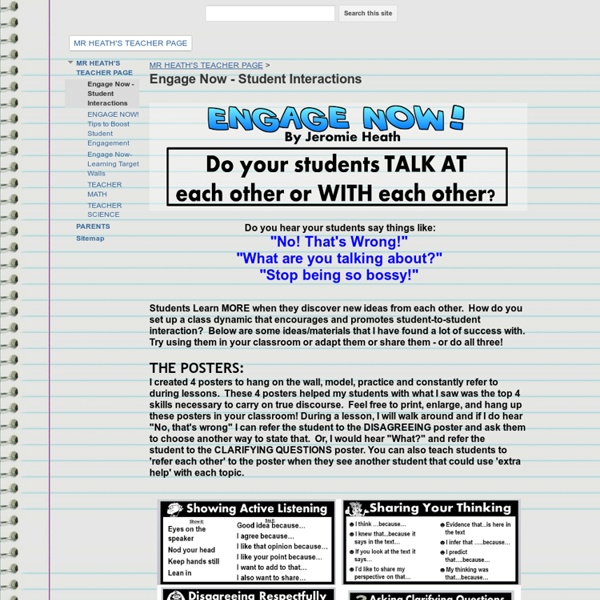Conversation Questions for the ESL/EFL Classroom
If this is your first time here, then read the Teacher's Guide to Using These PagesIf you can think of a good question for any list, please send it to us. Home | Articles | Lessons | Techniques | Questions | Games | Jokes | Things for Teachers | Links | Activities for ESL Students Would you like to help?
A few discussion activities for English language students
What discussion activities work in class? Tekhnologic, winner of the British Council’s Teaching English blog award for a post on setting discussion goals, shares a few ideas. A discussion can bring out your students’ interests and motivate them; it’s a chance for them to talk about the things they really care about.
Lost Luggage – Speaking Activity – Mike Astbury – Teaching Games
This is a practical speaking activity, designed to be part of a task based learning style lesson for a strong intermediate class. The material is adaptable for a variety of levels. [CLICK HERE to download the handouts.] Lead in
Do Does Did Done
The word DO appears a lot in English. This is because it can be a verb TO DO (Do / Does / Did / Done) and can also be an AUXILIARY verb (Do / Does / Did). The Verb - To Do The verb TO DO has four forms. Present Tense: Do / Does Past Tense: Did Past Participle: Done TO DO - Present Tense - (Do / Does)
915 FREE Speaking Worksheets
Learning to speak a new language is definitely a challenge. It’s very difficult for your students to do if they don’t practice on a regular basis. Luckily, you need to look no further because BusyTeacher.org has the tools to help your students practice their speaking - and want to do it, too! Let’s face it, students aren’t always jumping for joy at the opportunity to speak a language they aren’t 100 percent comfortable with. Students can be hesitant to speak for a wide variety of reasons - fear of mistakes, peer pressure, or lack of self-confidence are some of the main factors.
Control Alt Achieve: Video Dubbing Learning Activities for Students
When I was a kid, we used to find creative ways to keep ourselves entertained. One of our favorites was the Dubbing Game. Basically we would turn on the TV, find a good show, and then turn off the volume. Then we would make up new lines for the characters on TV (bonus points for using funny voices).
BusyTeacher.org
The knowledge and experience they share are fascinating, and they get speaking practice to boot. But you can’t just throw students up front and expect them to succeed. There are important steps to get them ready for upfront speaking. Going through each of these steps will ensure your students are prepared, practiced, and poised when they speak to the rest of their class. 1Have Them to Their Research FirstHow many students do you have that panic at the first mention of a presentation? It can be a struggle for some students to get up in front of their class when they are speaking their native language, never mind English.
Public speaking: an exercise and illustration
Know the room.Be familiar with the place in which you will speak. Arrive early, walk around the speaking area and practice using the microphone and any visual aids. Know the audience.Greet some of the audience as they arrive. It's easier to speak to a group of friends than to a group of strangers. Know your material.Practice your speech and revise it if necessary.If you're not familiar with your material or are uncomfortable with it, your nervousness will increase.
Comprehension Tests 7-9 – WebEnglish.se
Talk, talk and talk some more Every spring the Swedish schools must arrange National Tests in English for all 9th graders to attend. An essential part of this test is speaking English.



